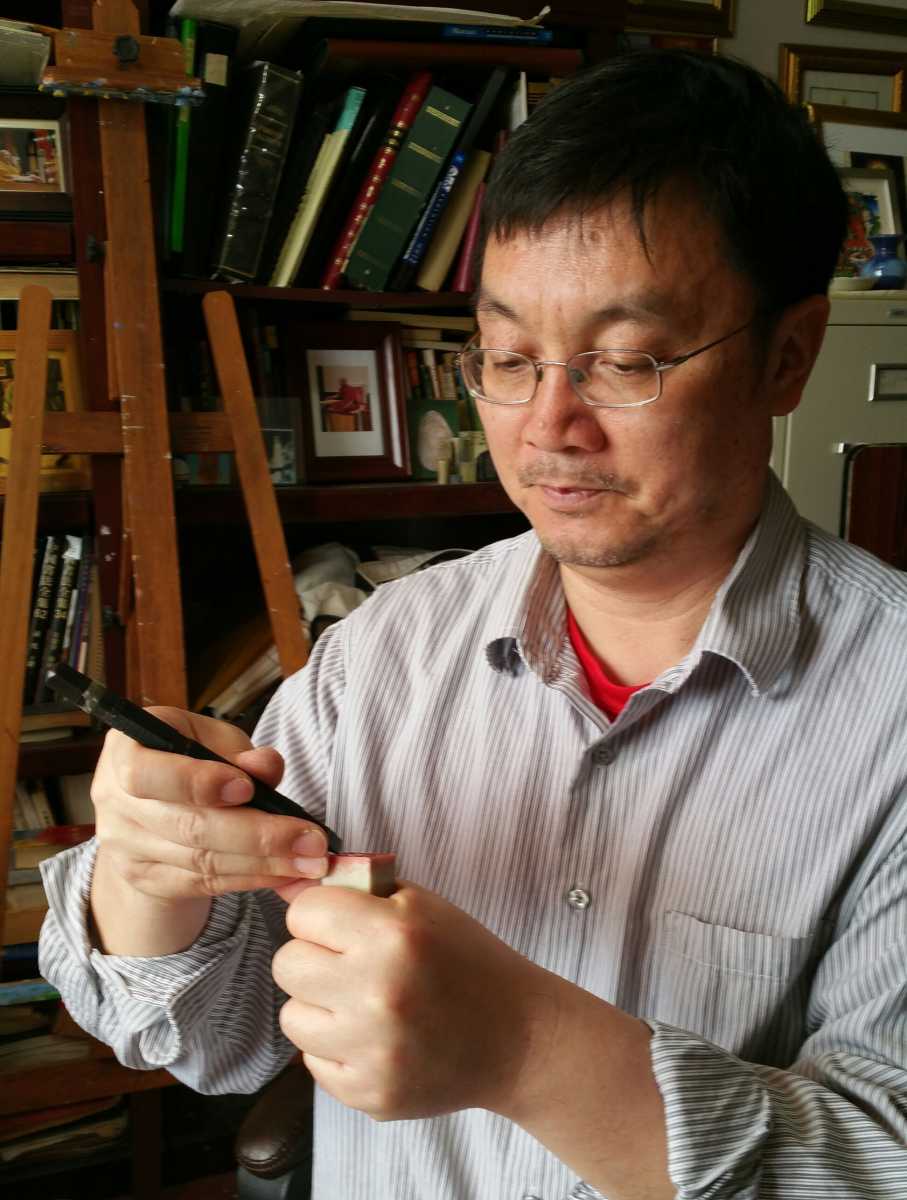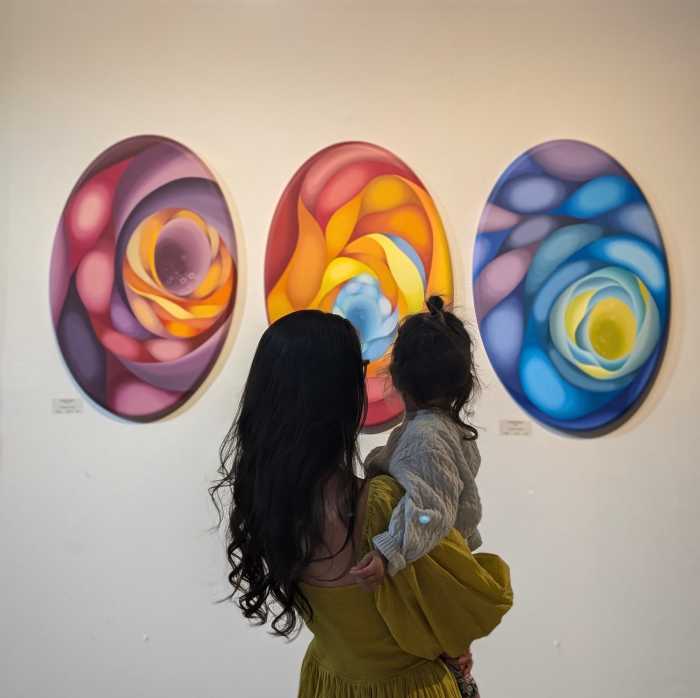BY TAMMY SCILEPPI
You won’t find these chops in any recipe.
Possessing an aura of mystery, ancient art forms called chops or seals, are way more than just unique motifs. You can find an amazing collection of his Chinese seals featured in a new art book by artist Simon Zeng, a longtime Flushing resident who came to the U.S. from China in 1996 and makes the best chops in Queens..
Part of our rich global history since the Dark and Middle Ages, the legacy of these strange, beautifully carved seal stamps belongs not only to Asia but also to the entire world. With roots dating back thousands of years, they’re an age-old method of signing one’s name, be it on an official document, a piece of art, or a note to a friend. Chinese seals can also represent a variety of characteristics, including peace, wisdom and harmony.
Showcasing 150 of his most striking brush calligraphy seal works, Zeng’s recently published “Leave the Mark in the Snow” (White Pine Press) is an homage to the artist’s wonderful heritage. His tome, which also explains the history and significance of Chinese chop art, is the first official seal book published in America by an “Eastern” immigrant artist, according to the author.
“A very traditional art form but also appreciated by the modern art scene, seal engraving art is very important in the Oriental art category,” Zeng explained. “I studied this art when I was living in China and was taught by my teacher Master Liu Zhanao. He praised me to his students and some media for my excellence.”
Zeng added: “Since I came to the United States, I have lived on my artworks, and some customers have ordered engraved works from me; now I have accumulated a lot. I wanted to pick out 150 and publish a portfolio, so that everyone can see my carved works. People can see the beauty of ancient hieroglyphs from 2,000 years ago.”
The classical scripts in the book include the most ancient form from the oracle bone script used in Shang Dynasty to other scripts used in Ching Dynasty. Readers can appreciate a rich variety of all forms of classical scripts.
Old-time and modern-day makers like Zeng have typically carved chops on a small block of stone, but they can also be made of wood, bamboo, bone or ceramic. When used, the stamps are dipped in either red ink or cinnabar paste. Engravings on the seal face can follow several calligraphy styles, which master engravers work hard to develop. Common carvings include Chinese characters, landscapes, figures, birds or flowers.
A personal chop in red color is an integrated part of a Chinese painting or calligraphy, which is not only the signature of the artist on the artwork, but also an essential touch to liven it up.
A typical seal is usually carved using a special knife; that’s how Zeng creates his. “The stone’s [names] are Qingtian or shoushan stone from South China. In my seal works, all classic ancient characters,” he added, noting that the book is available at the World Journal Book Store in Flushing (136-19 38th Ave.), where for 15 years, prints of his paintings have been shown and sold. His book can also be found at the Princeton University Art Museum in New Jersey.
The artist also noted that he wrote about seals art design for a book by another author: “The Art of Chinese Chops” (Ivy Press), which was available for a while at the Metropolitan Museum of Art.
The Queens creative paints and sells other artwork, like his oil and watercolor portraits and landscapes.
A while back, Zeng had several annual solo exhibitions at Pacific college of Oriental Medicine in Manhattan, where he taught art. He also exhibited at the annual Washington Square outdoor art exhibit in the city, and elsewhere.
You can find the book on Amazon at www.amazon.com/Leave-Snow_Chinese-Seals-Simon-Xianwen/dp/1945680237.



































